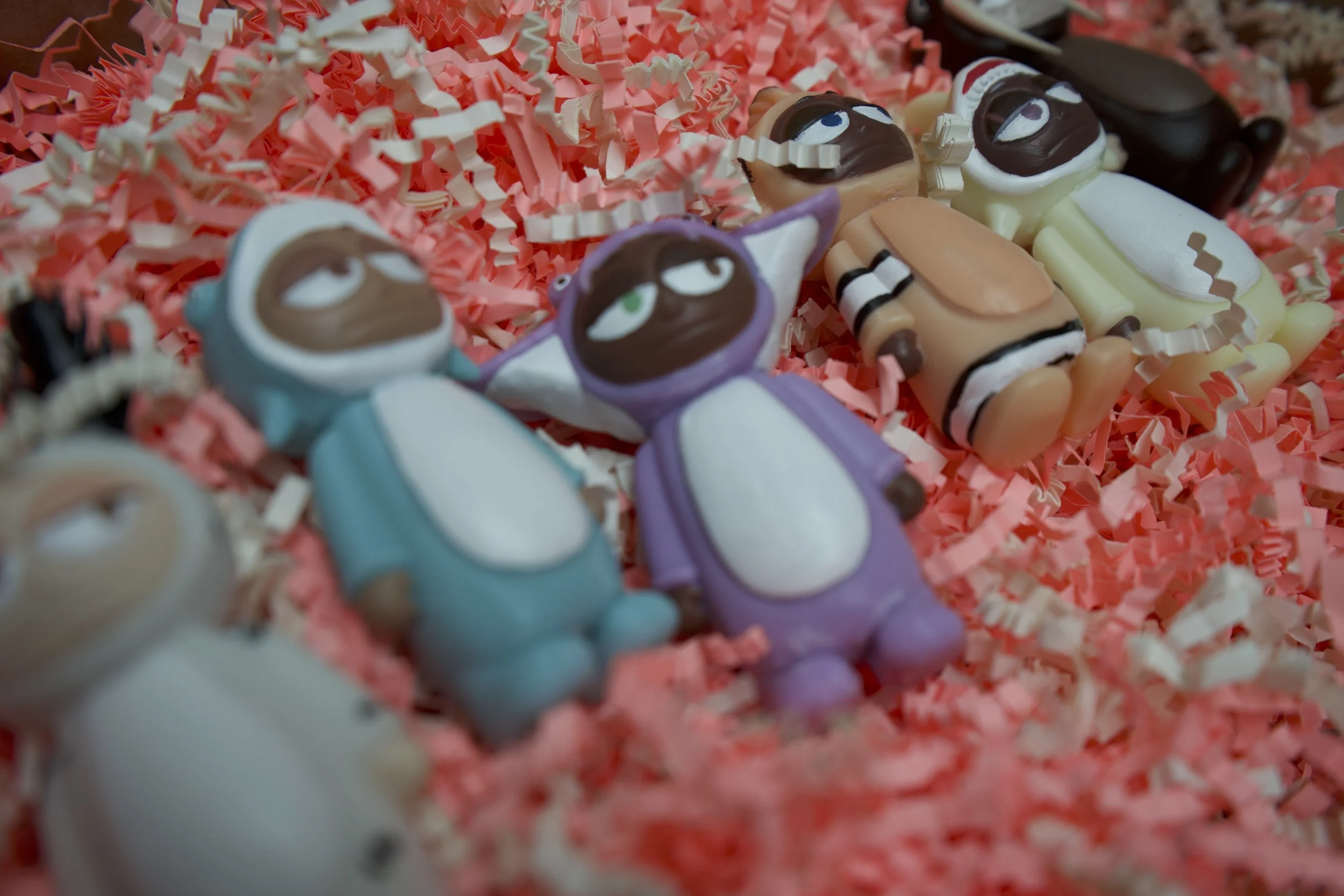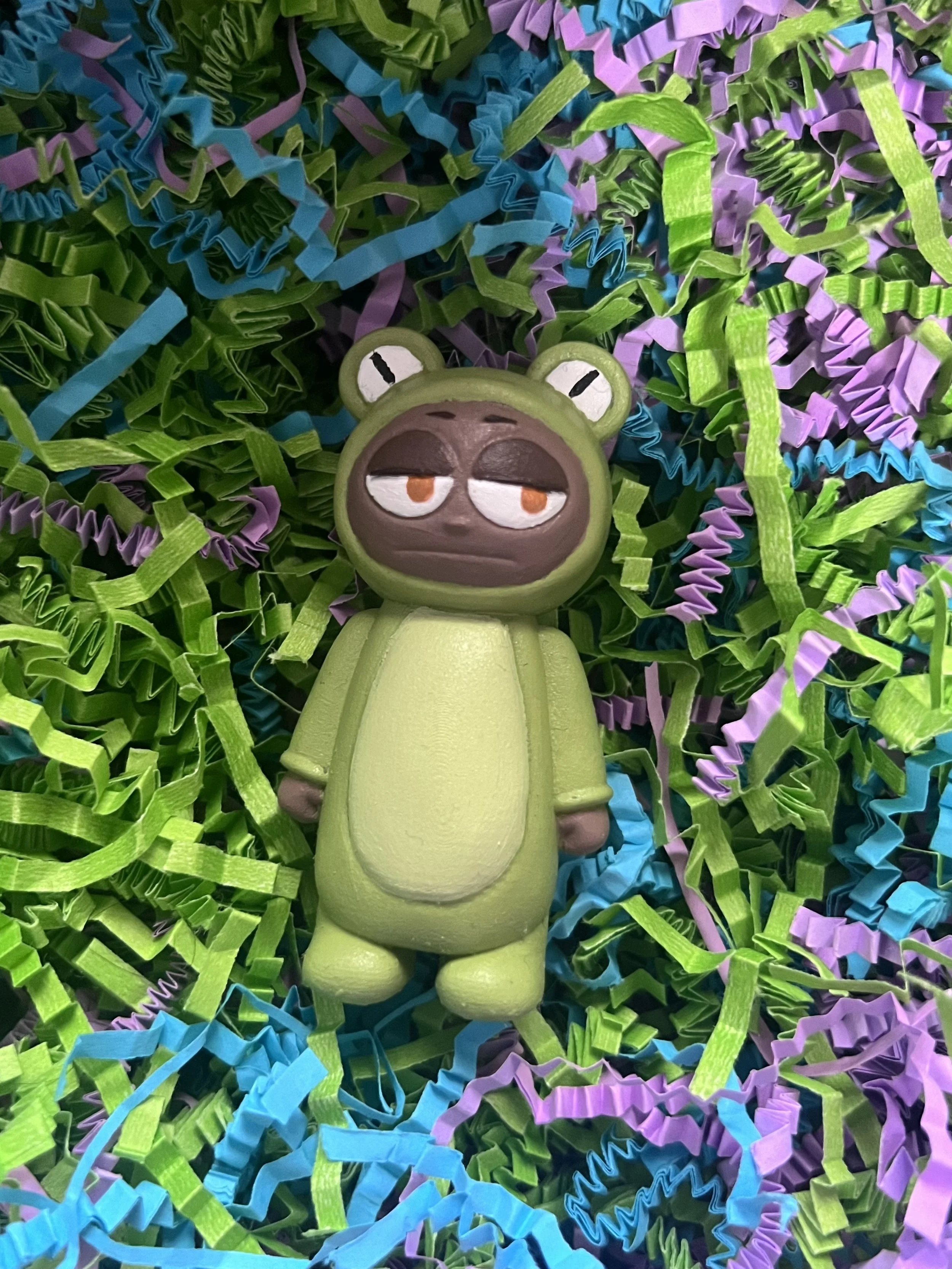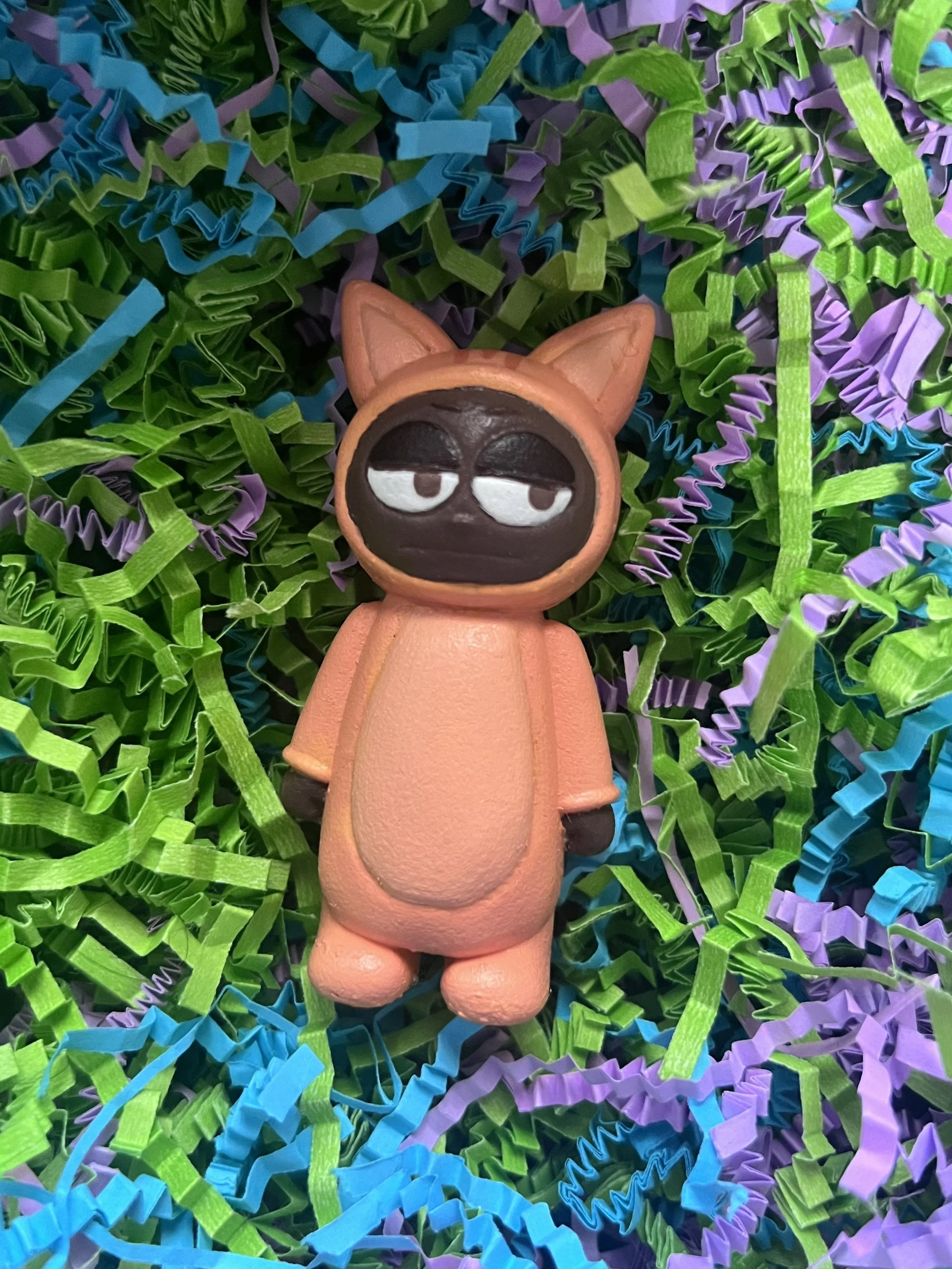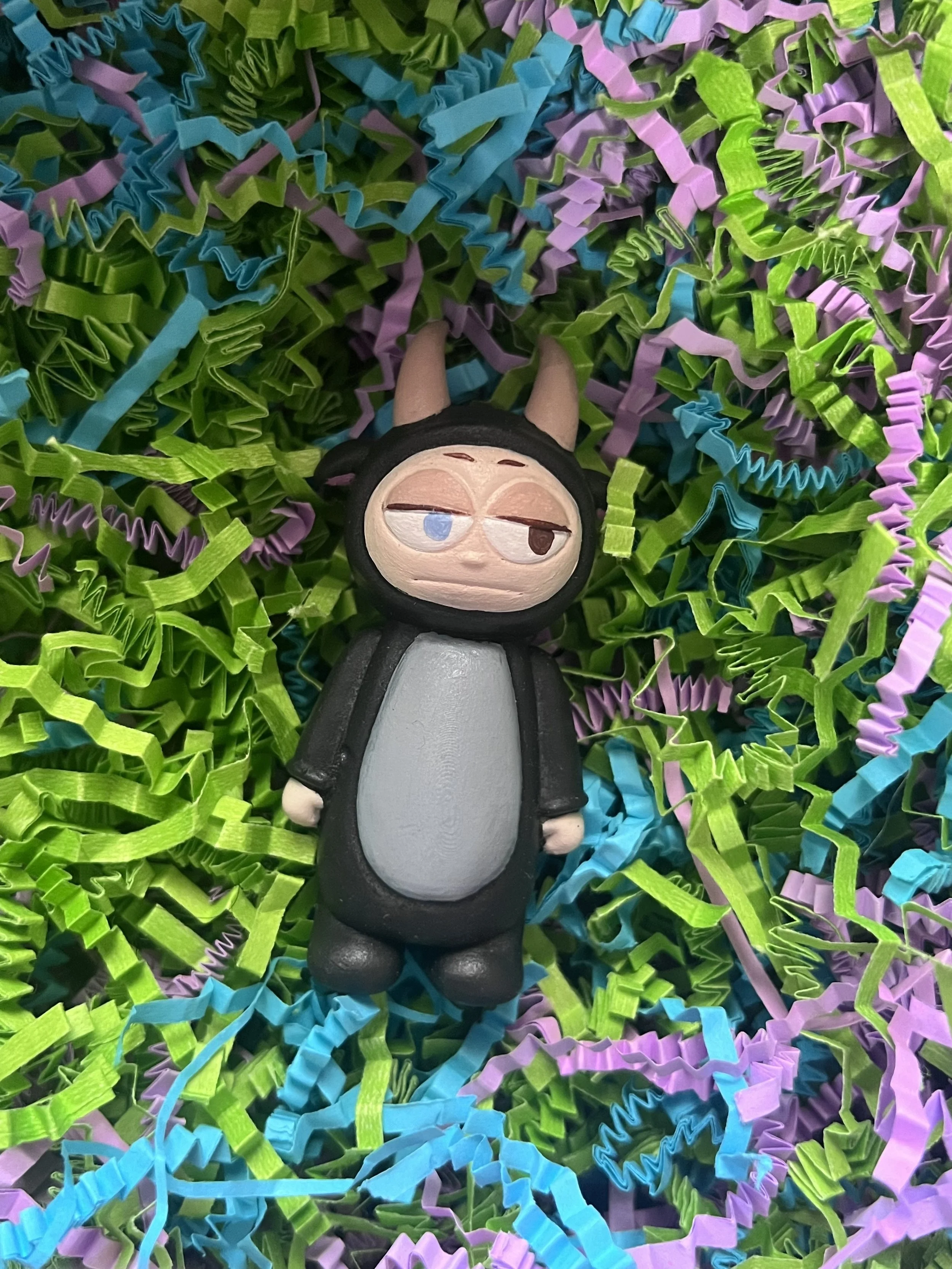Meh Miniatures
Blind blind box toys have been around since the 1980s, forming in Japan and gaining an increasing popularity in China and America in more recent years. After becoming a collector of blind box toys, I wondered if as an artist I can create something that is different and my own. When researching all aspects about these figures, there are three main points to think about before creating. The psychology behind the blind box toys, answering the question as to why does it have to be a mystery? The market that they are in, what are those most popular and how much do people really spend on these mini figures? And lastly the production, how would one make and reproduce a whole collection from scratch? In this research I plan to use all these points to help me create a series of my own while solving some ignored problems in the collectible toy world.
Blind box toys are small, opaque packages containing dolls, figures, or toys that are often based on popular characters from video games, movies, or music. The appeal of these toys lies in the surprise factor, as consumers don't know what they are purchasing beforehand. Studies have shown that this uncertainty can increase physiological arousal and emotional intensity, leading to greater joy and a stronger desire to purchase more. Consumers may also find it easier to buy these toys due to the lack of tough decisions, and they may form a personal connection with the surprise they receive. Overall, the element of surprise enhances the emotional value and purchase intention for blind box toys.
Deciding the perfect size for the figures wasn’t easy, but I designed the packaging to hold the figure snug inside,accounting for the paper filling inside as well.
The market for blind box toys has surged since 2020 due to the impact of COVID-19 on businesses, with companies using them as a marketing strategy to attract customers and boost sales.Large companies offer blind boxes of their out-of-season products at discounted prices, finding success with the strategy. This approach is linked to earlier practices like gashapons in Japan and collector cards, and its appeal is comparable to gambling. Blind box toys have seen significant revenue growth, reaching an estimated US $1.5 billion in 2020 and projected to hit US $4.3 billion by 2024.Brands like Pop Mart and Lanvin have experienced remarkable success with this strategy, attracting large numbers of consumers and achieving significant engagement.
Making blind box toys involves a complex and costly process that begins with designing and 3D modeling, followed by manufacturing. Larger companies use injection molding for PVC figures, while smaller businesses may use 3D printers or POLY resin. Injection molding is efficient but can be expensive due to the cost of molds. This method is often used for high-precision toys such as Gundam and Lego figures. Freelance artists like James Koenig, uses ZBrush to design characters and rely on local 3D printing businesses for production, also considering the packaging dimensions for their toys.
After researching all about the psychology, market, and production of blind box toys, I was excited to share my ideas with my friends. Weirdly though, most of my friends aren’t collectors of toys like this, and I found the main reason was because these characters did not represent them. Companies that sell blind box toys are mainly from China, and all of their human characters are made with pale white skin. When they do include a character with darker skin, there is mostly only one in the series, and the name of the character can be offensive. I conducted a survey that was targeted towards people that collect any sort of blind box toy. I found that 12 out of the 20 responses I got, they have never found themselves being represented in the special toy that they collect.
This box follows many other designs for blind box toys, but adding in a bio on the back. Each character was individually rendered and shown so that the person viewing the box can see what character they might get.Some brands choose to feature the actual 3D models to showcase the series, but others make use the digital drawing. I decided to do mine digital to match the overall theme of the box and due to the amount of time I had.
Most companies that sell blind box toys include extra smaller items inside the box. I decided to include a character card with a sticker attached on the back. I also wanted to create other small products to promote the series.
The character design I already had in mind, these silly people dressed up in animal onsies with an unamused look on their face. This particular one that I have been drawing for 3 years is a rabbit. After Bored Bunny, then came their friend Fatigued Frog. Giving them a few extra friends and designing the packaging was a challenge to say the least. To play off the idea of the characters wearing onsies with a heavy eyed thin lipped look, I named the series Slumber Squad and the toy line Meh Miniatures. After creating a general color scheme and box layout in Figma, I designed a style guide followed with the box design and other packaging in Illustrator. Through trial and error, I 3D modeled each figure using Nomad Sculpt on the iPad.
The 3D modeling was finished and now it was time to test out different printers. I found thata Filament printer didn’t give me the small details I wanted to include, but a Resin printer did. The Anycubic Photon Mono 4K printer gave a smooth and seamless print. With the use of Water-Wash Resin it was quicker and easier with the same quality that regular resin gave me. Since I got one kilogram of resin, I was able to print 25 figures plus a whole series to test paint and keep for myself. I learned that the Anycubic can automate supports for parts of the design that need it, and with testing I was able to minimize the amount of supports so the prints were clean. Working with a new machine was tricky yet fascinating. The machine works by having a plate going up and down into the vat of resin, and as they cure they get printed, upside down too!
After printing all the figures, I used a small dremel to sand down any imperfections on the surface. Then fine grit sandpaper to smooth out the bottom of the feet. It is really important for figures like these to be able to stand up on their own. Most collectors display their toys on a shelf or table and if the figure doesn't have a flat bottom they will most likely get frustrated with it. After sanding I tested acrylic paint on a spray painted figure and one that was not, and I found that the acrylic laid smoother on the figure that was not sprayed. I then hand painted each figure in batches, all the bunnies in one session, all the frogs in another, and so on. The test batch for myself helped me mix the correct colors for each character, making sure that the skin tones were accurate and not dull. Once fully dried I sealed them in with clear acrylic spray. I printed out the boxes in lightweight cardstock and hand cut and folded them. I did the same with the display boxes, but added foam board to the back for extra support. I decided to go with a tri-color paper filler inside the boxes, to match the theme but also to eliminate the amount of plastic waste. I also added in the corresponding character card along with the sticker on the back.
I am grateful to have participated in multiple art festivals including, two years of Spring into Art and the Parking Lot Party both hosted by UB’s Art Department, two years of Elmwood Village Art Festival, and the 48th Annual Lockport Art Festival.





















